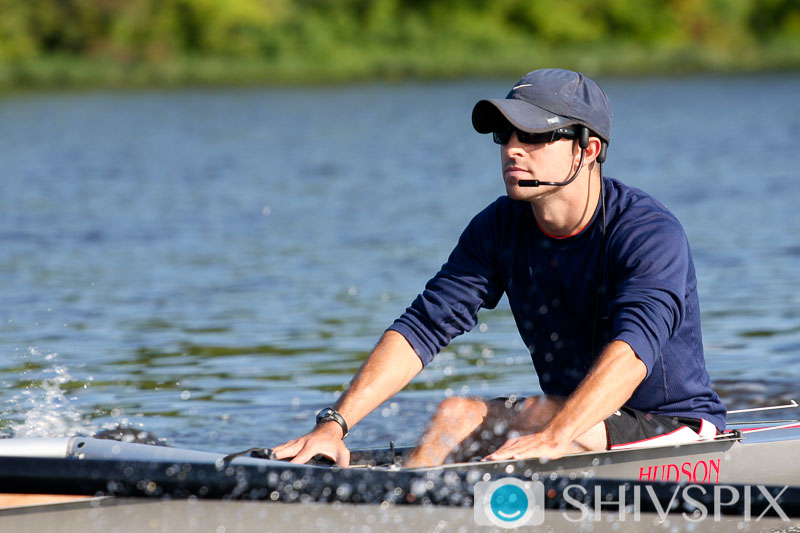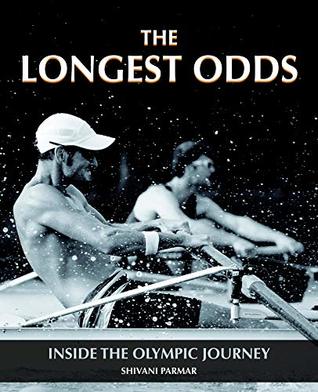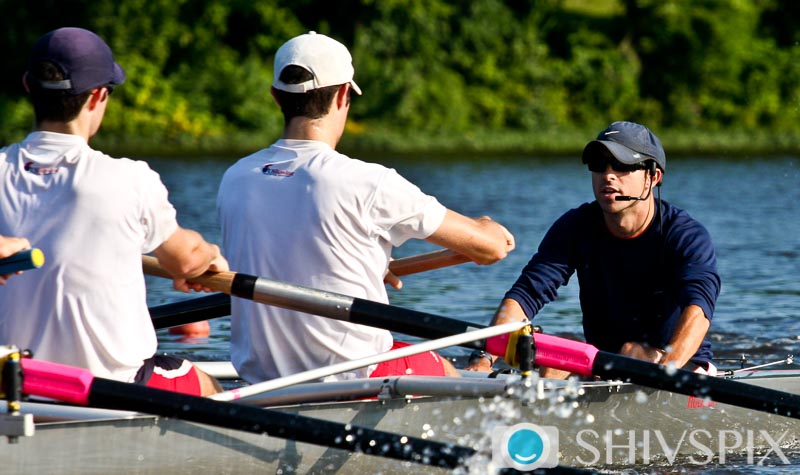What would you do to regain rhythm and control in the middle of a race when a boat is rushing the recovery severely and not responding to any of the usual “in two” calls? (Alternatively: what can you do when a boat stops responding to you in the middle of a race?)
Is it better to just let a crew confidently attack a race with poor rhythm, or is it better to try to make rhythm calls early in the race, possibly undermining their confidence, but also possibly helping them row more efficiently? (artificial tradeoff, I know)
– Anonymous
With that in mind, to develop a rhythm you can help your crew find its connection and suspension. Work on catch timing first. Help them find each other at the front end by calling the point of entry. Develop the area around the catch for a while and then include length focus calls. Make sure they are using maximum compression on the slide as they place the blade. A solid catch is a prerequisite for strong rhythm.
Once the catches are more uniform and there is less missed water, you can start to talk about suspension. Talk about pushing the legs. Talk about getting the knees moving with the speed of the boat. Try and get the crew to spend more time driving. Longer arc in the water leads to more acceleration. This also allows the rowers to suspend their body weight off the seat and on the oar handle. If your crew is suspending, rhythm is automatic.
To summarize; it is very difficult to fix rhythm by calling direct changes to the rhythm. Instead, work on connection, suspension, and power calls. The rhythm tends to correct itself when you have those elements of the stroke working properly.
– Ned DelGuercio
Enjoy reading this? Read the full collection of coxswain tips.
Interested in taking an even deeper look at how national team athletes train and race? Check out The Longest Odds.

Ned DelGuercio
Ned DelGuercio, known as one of the toughest coxswains around, came to the team in 2005. His career highlights include gold medal wins at the World Rowing Championships in the M4+ in 2007 and the LM8+ in 2008, as well as a gold medal from the 2007 Pan American Games in the M8+.

The Longest Odds
Go behind the scenes of the Olympic Journey with The Longest Odds, a photo-documentary that goes inside the Beijing and London Olympic journey of the US Olympic rowing team.
This book illustrates what you do not see on television – it’s a raw look at what athletes go through during their years-long journeys much before anything appears on television.
The Longest Odds allows us to see those highs and lows, the conflicts, joy, exhaustion, elation, fear – and most of all, the bonds of friendship being indelibly forged.

